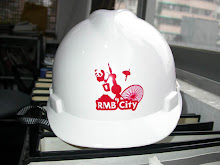Each postcard represents a specific focus within the larger theme and focuses on a visual element: typography, image, color pallete, pattern/texture, image, abstract and representational symbols, and diagrams.










The shapes Carina used for her project are reflected above in circles, squares and triangles. The idea being that shapes and colors communicate emotions in ways that words can't. The final three dimensional shapes could be arranged to express how a person was feeling at a particular time. This series of postcards helped her to define some aspects of communication with color and geometric shapes.

Jaime imagined a place called Reverie, a city of dreams. Some of the ideas from his post cards carry over to the final project and some do not. The cards helped him to build the visual and verbal content for his city.
The cards are assigned and due the next class period. These are intended to be quick studies and then we move on.

Simple models of the projects structure include no text or graphics, just blank bristol board models. Jaime chose to stack the city emphasizing upward movement. In his idea, the dreamer begins at the lower level, with the goal being to reach the ultimate dream at the very top of the city.
















































